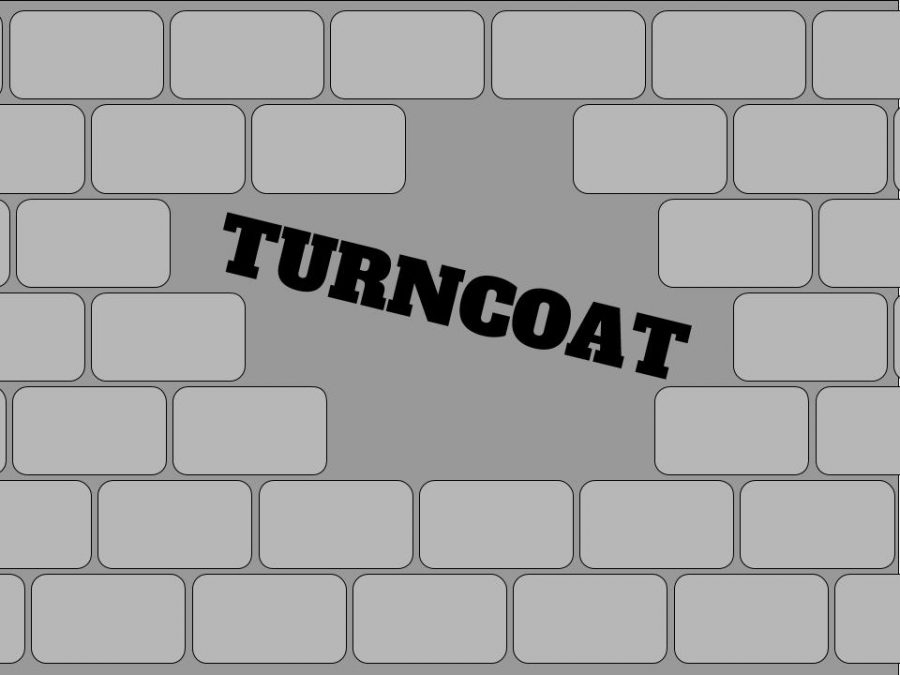Turncoat: Build the Wall
September 26, 2018
My name is Jonathan Ross. I’m a junior here at NASH and a writer for the Uproar. Like many of the other aspiring journalists, my political ideals tend to lean left. Although much of mainstream media might disagree, it isn’t always good to be in a room filled with unrivaled and self-perpetuating ideals.
Because of this, I have taken it upon myself to acknowledge, research, and write in favor of political opinions which conflict with my own. I hope that this will not only serve as a learning opportunity for me but also a way to demonstrate the importance of research, civil conversation, and maintaining an open mind.
The first installment will be on immigration, and I will attempt to argue in favor of both “the wall” and harsher deportation laws, instead of addressing DACA and immigration as a whole. In the future, I will be taking suggestions as to what the next issue of “Turncoat” should be. Without further ado, please enjoy.
The debate on immigration is not a binary concept, although many politicians try to push the black-and-white narrative. The truth is that neither extreme is necessarily accurate. Instead, the facts support an anti-immigration, pro-immigrant stance. This means simply that the issue with immigration is not the quality of the people or the labor that they supply, but rather the negative repercussions associated with excess, and illegal, immigrants. These repercussions primarily include an increased cost of social welfare on a national scale and a siphoning off of jobs for native-born citizens.
Last year alone, the U.S. government spent more than $100 billion on illegal immigration. In the grand scale of government spending—with a 2018 budget of almost $4.5 trillion—this might seem like a fairly insignificant amount. However, unlike much of the other government spending, the costs of providing benefits to illegal immigrants is largely not refunded through taxpaying, because only a small margin of undocumented immigrants actually pay an appropriate amount of taxes. Because of this, the financial burden of such benefits lies almost entirely with the American taxpayer and the government itself. Furthermore, the money spent on healthcare and law enforcement for illegals easily surpasses the spending for other critical items, which should be prioritized. For example, the total education budget only equals 75% of the $100 billion spent on illegal immigration. If illegal immigration were severely limited, the government could focus instead on important things like infrastructure and education.
Our healthcare, domestic services and otherwise publicly funded initiatives are not, however, the only things that illegals take from us. Illegal immigration is also taking its toll on our native job count. This is largely caused by the excess quantity of illegal aliens in America who are here for the purpose of either repatriation to support their family abroad, or to support their family within the country. These aliens tend to be more willing to work “under the table” at a lower price, and are therefore preferable to native born workers from the standpoint of a business. While this certainly increases the profit margins of businesses, it also leaves many Americans without jobs. According to a Pew Research Study, almost 1 million undocumented immigrants currently work in the farm and construction businesses. However, the weight of these numbers is often minimized on the basis that native-born Americans simply do not want these seemingly unattractive jobs. As Kelly Osbourne infamously said, “If you kick out Latinos, who else will clean your toilets”.
The answer is American workers, not selected on the basis of ethnicity, skin tone, or gender, but rather on their status of citizenship. And yes, undoubtedly, there would be some who would prefer unemployment to picking plums from dusk to dawn. Nevertheless, the extra space for labor could be utilized. For example, the U.S. Prison System—which currently costs the government nearly $80 billion and houses 2.3 million people—uses penal labor to help marginally offset costs. Why not further diminish expenses by replacing illegal workers with prisoners? It would help not only with explicit costs, but also promote prisoner rehabilitation and decrease recidivism to the extent that prisoners use their newly developed skills after their release from the penal system.
Regardless of the potential benefits of extra job availability, and how we allocate such availability among native-born Americans, reducing illegal immigration and deporting a large number of illegal aliens currently in the country would relieve a tremendous tax burden on U.S. taxpayers and promote employment among native-born Americans. Immigrants as a whole are not the issue. The issue comes when illegal aliens are put before U.S. citizens; it comes when the costs of illegal immigration outweigh costs of citizens.












